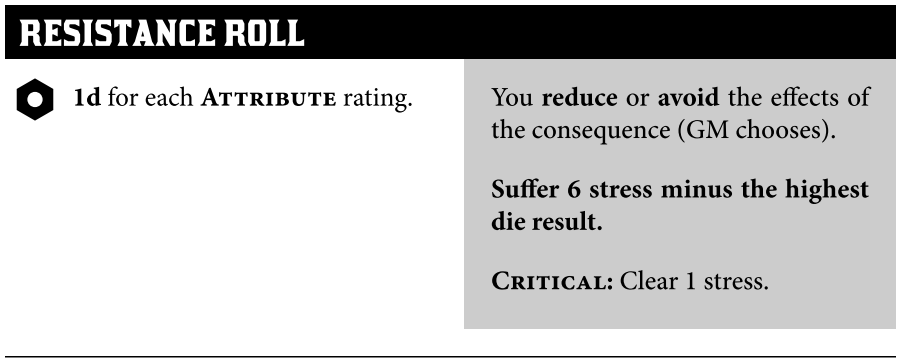Today I just want to shout out my favourite safety tool: Resistance Rolls in Blades In The Dark. The fact that they& #39;re not bolted on but built in to the game empowers players to manage content in a way other systems cant. You cant ignore them and they HAVE to address the content.
A couple of people have mentioned that having a stress cost makes resistance rolls an ineffective safety tool but I think that makes them actually better for the purpose in practice.
In my experience the problem with non-integrated safety tools is that people are reluctant to use them. In most of the situations I& #39;ve seen where someone has crossed a boundary in play a safety tool wouldn& #39;t have helped because no one would feel comfortable using it.
The common response to this problem is that it needs to be normalized in table culture but if your table culture is good enough for people to feel comfortable using safety tools, you probably don& #39;t actually need the tools in the first place cause players can handle issues ad hoc.
The problem is that there is a social cost to using a safety tool *because it interrupts play*. No matter how good your table culture is that cost is never zero.
What Resistance Rolls do is transfer that cost AND normalize the process. It solves both problems at once. When you say "no that doesn& #39;t happen, I Resist it." in Blades In The Dark, that& #39;s NORMAL cause you use it all the time to avoid dying or embarrassing yourself or losing out.
So play HASN& #39;T been interrupted because this process is normalized, AND any social cost to that action is transferred to the game& #39;s rule system.
In practice I and folks I& #39;ve played with are MORE empowered to protect their own safety because the game itself lends them it& #39;s full authority. They are ENTITLED to the (now very minor) interruption because they are BUYING it with stress.
Resistance Rolls for me are my favourite safety tool because it& #39;s the one that actually gets used effectively in practice in games I& #39;ve played.
Game systems should do work to make it so you can have fun with your friends without having to spend as much energy. Safety tools should do work to make it easier to support yourself and other players without having to spend as much energy.
In my experience most safety tools don& #39;t make the process of supporting yourself or others cost less social energy. The people it does cost less energy for are the people who already have skills leveraging formal systems and social codes for their own protection.
Not everyone has those skills. The ones who have built up those skills are usually the ones who need those systems of protection more, but it& #39;s ACTUALLY not egalitarian.
When your safety tool is hooked into your in-game economy, everyone feels more equally empowered to use it, because everyone is already using those game systems equally and everyone has the same system empowering them to support themselves or others.
Some people have also mentioned that the rule does say that the GM decides on the outcome after a resistance roll (total avoidance, reduction in outcome, the degree of reduction etc.)
In my experience the fact that the game then puts the ball back in the GMs court after the content has been flagged by the player with a resistance roll actually directly opens up the table discussion about what players are interested in seeing vs what theyre not comfortable with
It doesn& #39;t say "and then have a discussion" but because the rules have now made the contention between the player& #39;s vision and the GM& #39;s vision clear, it almost always forces an efficient healthy discussion (at least between mature adults).
So for me, the way the game moves narrative authority back and forth like that actually means that games and table culture tends to get safer as it goes on, which is another bonus.
@threadreaderapp unroll

 Read on Twitter
Read on Twitter


